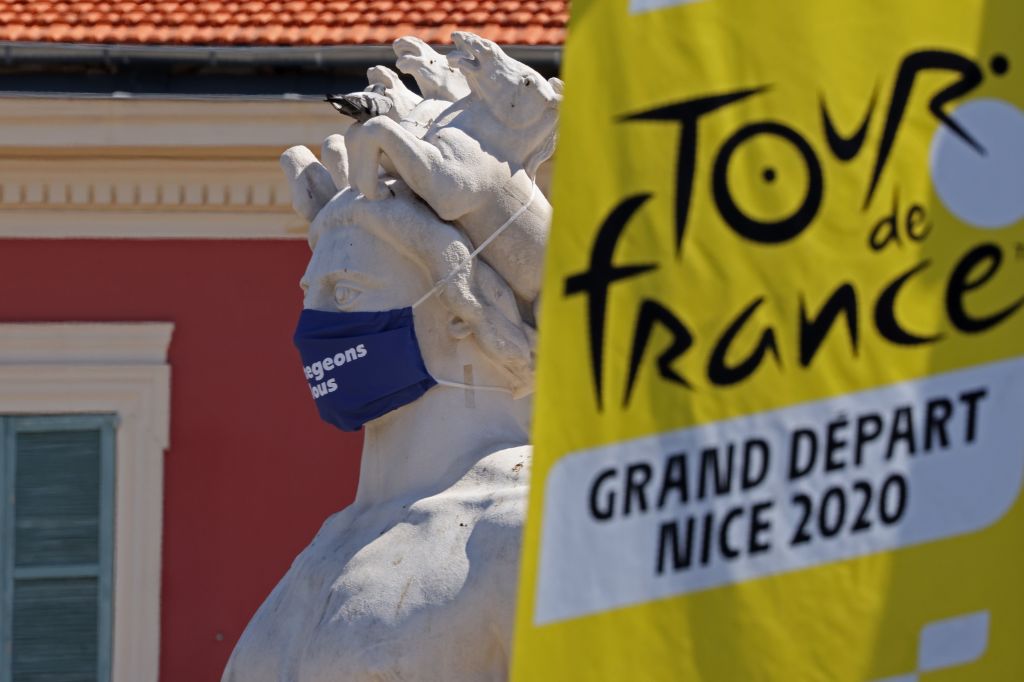I went for a long walk last night in Paris. I grumbled most of the way, only breaking off to nod a greeting to the handful of other maskless pedestrians. We’re a dwindling band, but there’s a camaraderie among us, a bond created by our refusal to give in to hysteria. It’s an eclectic club, cutting across sex, age and ethnicity. A report this week stated that Frenchwomen in their fifties were the most reluctant to wear masks, but in Paris I would say it’s men in their forties and women in their early twenties.
But to see someone on the streets in Paris without a mask has become increasingly rare in recent weeks. In May I wrote that in my estimation fifty percent of Parisians sported them, a figure that has now risen to about two-thirds of the population; that chimes with a recent survey that found 63 percent of French people believe masks should be mandatory on the streets.
I took a selfie at one point last night and sent it to a friend in England; it was captioned ‘My last hours of freedom’. I was still grumbling when I went to bed, and my mood hadn’t improved when I left my flat this morning to go for a run. I’m an early bird, out of the house at 7 a.m., but I glanced at my watch as I ran, mindful that if I wasn’t back by 8 a.m. I could be fined €135 ($160) for not wearing a mask.
And therein lies the reason for my rage. On Thursday the government announced that as of 8 a.m. Friday masks are mandatory in Paris and its outlying areas. No exceptions, not even for cyclists or runners. In the municipal running track where I like to blow off steam there were a couple of other regulars who, like me, were enjoying their last run without a mask. Have the French government not been listening to the medical experts who have been warning for weeks of the dangers of wearing a mask while exercising?
As it transpired, they have. Shortly after 8 a.m. the Paris police Prefecture did a U-turn; cyclists and joggers are exempt. For that we have to thank Anne Hidalgo, the socialist mayor of Paris. As her deputy, Emmanuel Grégoire, explained, forcing people exercising to wear masks while exercising was not only ‘dangerous’ but it was counter-productive: Hidalgo was recently reelected on a green platform, and top of her agenda in her second term in office is to make Paris a cycle-friendly city. Coronavirus has helped in that respect, and in recent weeks she has urged Parisians to cycle to work in order to reduce overcrowding on the city’s buses and metros, which, as I can attest, are packed to the gunnels at rush hour.
Unlike white-collar Londoners, Parisian office-workers have been bolder in returning to the office; a study at the start of this month found that 83 percent of office staff in France were back at their desks, more than Italy (76 percent), Spain (73) and Germany (70). In Britain the figure was 34 percent.
This is one factor rise behind the rise in the number of new cases of coronavirus in France (there were 6,000 new infections between Wednesday and Thursday) along with the increased testing. It’s a balancing act for President Macron; as he said in a recent interview the country has to learn to live with the virus and that ‘zero risk does not exist in a society’. He knows that the country can’t have another national lockdown, at least not without destroying the economy, and so he is determined that schools will open next week as scheduled and that businesses will also get back to a 9 to 5 routine. Masks will have to be worn inside schools and offices but that’s a better solution than Britain’s confused and cautious approach.
I spent most of July in England and two things struck me in comparison to France: first, fewer people wear masks, even on public transport. In fact, at Clapham Junction station only about half of the staff were wearing them. Second, I couldn’t get over how empty central London was. The day after Paris emerged from its lockdown on May 11, I went for another of my long walks, and the amount of traffic back on the roads was impressive. Metros were also running at about 50 percent capacity and one could sense the desire to return to normality. Not so in London in July. There was one place, however, that was busy, and that was Hyde Park, teeming with picnickers when I walked across on a Friday afternoon.
[special_offer]
Another difference I noticed was the difficulty in parting company with bank notes in pubs, restaurants and shops. Sorry, the vendors said, we only accept cards, for hygiene reasons. I’ve not encountered a similar reluctance to handle bank notes in France, or in Munich, for that matter, where I spent last week.
I should have been in London but quarantine scuppered that plan so I hopped on a train to Germany. In Munich everyone wears a mask indoors but hardly anyone does outside. This makes for some wonderfully absurd situations, such as wearing a mask in a near-empty Museum of Bavaria, and then an hour later jostling my way through a crowded Marienplatz among scores of shoppers and tourists with not a mask in sight.
It didn’t really make sense, but then what does in the age of coronavirus?
This article was originally published onThe Spectator’s UK website.

























